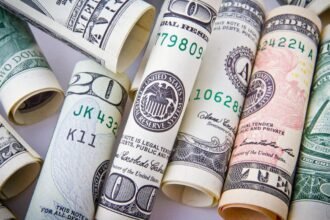Verizon Communications (NYSE: VZ) stock recently hit a 52-week low, bringing its dividend yield to an all-time high of 8.83%. This eye-popping yield is attracting income investors, but a closer look reveals potential risks behind the high payout.
Verizon’s Rich Dividend History
Verizon has long been known as a dividend stalwart, with 17 consecutive years of payout hikes under its belt. This impressive track record is the longest amongst its telecom peers and reflects management’s commitment to rewarding shareholders.
When Verizon boosted its quarterly dividend by 2.1% in September 2022, it brought the forward yield to approximately 8.83% based on the stock’s 52-week low of $30.14 reached earlier this month. With the S&P 500 index yielding just 1.8%, Verizon offers income investors nearly 5x the income potential.
Healthy Payout Ratios…For Now
Verizon’s payout ratios also indicate the dividend is sustainable in the near term. The company’s dividend accounted for 57% of earnings estimates for 2022-2023. Additionally, dividends represented only 28% of operating cash flow last quarter.
While these payout ratios are quite healthy, Verizon does face high capital spending requirements that pressure cash flow. Management expects $18.25-$19.25 billion in capital expenditures this year and projects $17 billion in free cash flow. With dividends consuming roughly two-thirds of free cash flow, there isn’t much left for other investments.
Limited Room for Growth
Verizon’s heavy capital spending is tied to improving its 5G network and spectrum holdings. The company trails T-Mobile in 5G coverage and speed, so playing catch-up is crucial but costly. With most free cash flow going to the dividend, Verizon can’t fund growth initiatives through operating cash flow alone.
Taking on more debt is also problematic, as Verizon already carries $152.7 billion of obligations. Management is targeting a net debt-to-EBITDA ratio of 2.25x, down from the current 2.6x. Adding more leverage could jeopardize Verizon’s credit ratings and raise borrowing costs.
Without sufficient capital to invest in growth, Verizon risks falling further behind competitors. The dividend may be safe for now, but lacking revenue and earnings growth could pressure payout ratios in the coming years.
Bargain Valuation, But for Good Reason
Verizon’s dividend yield approaching 9% is accompanied by a bargain-basement valuation. The stock trades at just 7.4 times forward earnings estimates.
However, the rock-bottom multiple reflects Verizon’s growth challenges. In 2022, revenue is expected to decline 2.6%, resulting in no EPS expansion. Comparatively, T-Mobile expects to deliver double-digit earnings growth this year.
Looking ahead, analysts forecast Verizon’s earnings declining 2.3% annually over the next five years. Sluggish top-line growth and heavy capital spending take a toll on profitability. T-Mobile and AT&T both anticipate low-single-digit EPS growth, underscoring Verizon’s competitive disadvantages.
While the valuation may seem attractive, it fairly represents the company’s weak growth outlook. Without a compelling path to reaccelerating earnings, significant multiple expansion appears unlikely.
Conclusion: Tempering Expectations May Be Prudent
Verizon’s towering 8.83% dividend yield certainly grabs attention. However, investors should weigh the near-term income potential against risks that could emerge over time.
Verizon’s industry-high yield signals the market’s concerns about competitive pressures on the business. The dividend has limited cushion for sustained earnings declines, nor is there flexibility to invest more aggressively in growth.
Income-focused investors drawn to Verizon’s yield may want to temper their total return expectations. While the dividend looks stable for now, lack of growth could limit upside beyond the high income stream. Treading cautiously seems warranted until Verizon demonstrates progress in strengthening its 5G network and competitive positioning.





